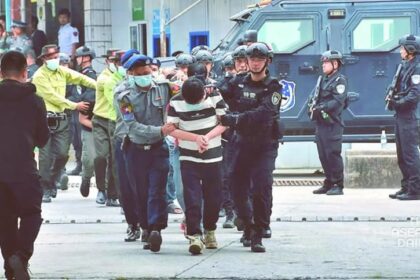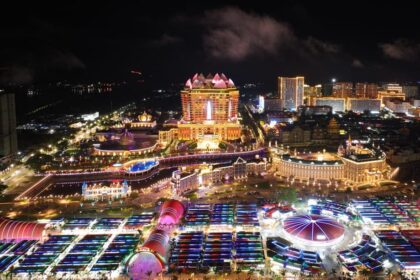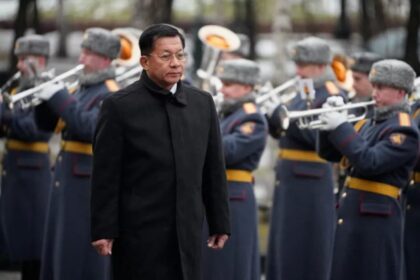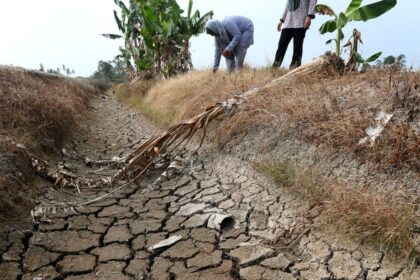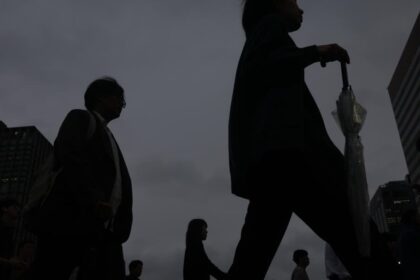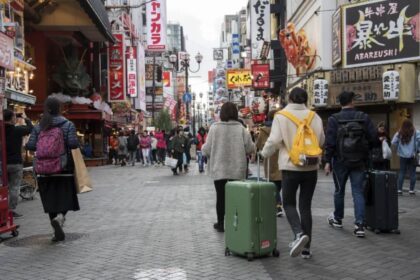Why an aging North Korea matters now
North Korea is entering a population crunch that is hard to manage for a country with limited resources and restricted access to global markets. The share of people aged 65 and older is around 12 percent, according to United Nations estimates, close to the 14 percent threshold that defines an aging society. At the same time, the average woman is having about 1.8 children, below the 2.1 needed to keep the population steady without immigration. The state has not released a full census since 2008, leaving demographers to rely on models and indirect surveys. Even with data gaps, the direction is clear. The country of roughly 26 million is getting older while having fewer babies.
- Why an aging North Korea matters now
- Senior centers in Pyongyang, promise and limits
- How North Korea grew old before growing rich
- Falling births, shrinking workforce, strained military
- The health burden of rapid aging
- What Kim Jong Un says, and what policy can do
- A parallel crisis in the South, different tools to respond
- What to watch next
- The Bottom Line
Aging without wealth is a hard equation. Wealthy societies in East Asia that are graying have capital, technology, and safety nets that soften the blow. North Korea is far poorer, with analysts estimating that many households live below the poverty line, and social protection has thinned since the economic crises of the 1990s. International sanctions over the nuclear program limit access to advanced machinery, so the economy depends heavily on human labor. A smaller working-age cohort, paired with longer lives, puts pressure on families, on the military, and on a health system that struggles to provide even basic supplies in some regions.
The state has begun to signal awareness of the shift. In Pyongyang, authorities have opened new facilities that serve older residents. These steps are billed as part of a broader push to honor and support seniors. Yet the initiatives remain concentrated in the capital. Outside Pyongyang, many retirees report irregular pensions and food stipends. Many older adults who can still work turn to local markets to survive. The gap between the scale of the demographic change and the reach of new services is already visible.
Senior centers in Pyongyang, promise and limits
In recent months, a third senior center opened in the capital’s Hwasong District, part of a small network designed to cater to older citizens. Visitors describe busy rooms and steady foot traffic, a sign that the need for social connection, safe exercise, and basic therapies is large. The centers have quickly become symbols of concern for older people in the heart of the capital.
Inside the new centers
Facilities in Pyongyang advertise therapeutic exercise and spa services, along with space for sports and recreation. For seniors dealing with joint pain or chronic conditions, even light therapy or warm-water baths can improve daily life. Group activities also rebuild social ties, which often weaken in old age as mobility drops and family members spend long hours in informal work.
In an article marking the International Day of Older Persons, the state’s external portal emphasized the government’s duty to care for elders.
In the DPRK it is one of the important policies for the state to carry responsibility for the health and living of the older people and take good care of them, systematically increasing the investment in elderly care and providing them with a civilized and happy life.
The official message projects a rising investment in care. Yet similar facilities have not been reported outside the capital. Retirees are entitled to modest pensions and food allotments if they meet work history rules, but funding shortfalls have often left those promises unmet. Many seniors still earn income in local markets, and many families shoulder the costs of medicines and transport. The capital focus also serves political aims, strengthening cohesion and prestige in the city most visible to foreign visitors.
How North Korea grew old before growing rich
The roots of low fertility stretch back decades. After the Korean War, the government expanded education and mobilized labor to rebuild. By the 1960s and 1970s, leaders encouraged later marriage and smaller families. Contraception and abortion became available, unusual for a country at such a low income level at the time. These choices helped stabilize population growth even as the economy slowed.
The crisis of the 1990s, known inside the country as the Arduous March, brought severe food shortages and a breakdown in state rations. Households responded by limiting births. Later, the state reversed course, banning abortion and birth control in law and promoting larger families with benefits. Yet a weak health system and economic hardship held down birth plans. United Nations assessments place fertility near 1.8 today. Studies suggest the working-age population could begin to contract before 2030, and the total population may start to decline in the 2030s if current trends hold.
Hyun In-ae, a research fellow in Seoul who defected from North Korea, described how the collapse of state welfare reshaped family decisions.
With the government welfare system all collapsed, women became the sole breadwinner of their family. Having a child meant that they can’t work and the whole family has to starve.
That tradeoff changed social norms. Young adults delay marriage and seek financial stability before forming families. Many women manage both market work and home duties, a dual role that leaves little room for a second or third child. These habits have persisted even as the worst of the food crisis faded.
Falling births, shrinking workforce, strained military
Fewer babies today mean fewer workers tomorrow. A smaller cohort of young adults reduces labor supply for farms, mines, construction sites, and street markets that move goods. That drags on growth and weakens the tax base. Research drawing on defector testimony and field reports indicates that the authorities have leaned on mobilization campaigns and expanded women’s participation to fill gaps, including in heavy labor.
Security planning is also affected. North Korea fields about 1.3 million active soldiers, roughly five percent of the population. Long service terms can deepen unit cohesion, yet they keep many men and an increasing number of women away from family life during peak childbearing years. That can depress births further. With limited access to advanced equipment, it is difficult to swap machines for people in both the military and industry, making a tight labor market even tighter.
Young-Jin Choi, a professor at Yonsei University, warned that the country is crossing a key threshold.
North Korea is expected to enter into an aging society, with more than 14 percent of its population being 65 or older by 2025. If these trends continue, North Korea will likely face a vicious cycle in which the low birth rate and an aging population will cause a further decline in economic vitality, which in turn will further aggravate the low birth rate and aging population problems.
Signs of strain extend beyond barracks. Studies point to labor shortages in farms and mines, prompting larger work mobilizations of young adults and married women. Markets, a vital survival channel since the 1990s, lose energy when fewer people in their twenties and thirties take part. When household income growth stalls, parents hesitate to have more children, reinforcing the cycle.
The health burden of rapid aging
The country’s disease profile has already shifted. Evidence gathered over decades by North Korean health agencies and international organizations shows that noncommunicable diseases, including cardiovascular disease and cancer, have overtaken infections as leading causes of death. Recent assessments indicate that around 79 percent of deaths are due to these chronic conditions. High smoking rates and inconsistent access to screening and treatment raise risks for older adults, especially men.
Infectious disease and nutrition problems have not disappeared. This double burden stretches a health system that struggles with medicine shortages, aging equipment, and staff attrition. For rural seniors, a treatable condition can become life threatening if clinics lack supplies or travel to larger hospitals is costly or unreliable. Any nationwide push to help seniors will need to account for both chronic disease management and the lingering threats of infections and malnutrition.
What this means for families
When formal care is limited, the burden falls on relatives. The same adults who trade in markets, tend plots, or work in mines often care for aging parents. Time spent caregiving cuts into time for earning. Smaller families mean fewer hands to share the load. The new centers in Pyongyang can give respite to some households, yet most people live far from these services and must rely on family support or informal networks.
What Kim Jong Un says, and what policy can do
North Korea’s leader has begun to speak publicly about low fertility. At a national meeting for mothers in December 2023, he urged women to have more children, linking family size to national goals and praising mothers who raise large families.
During that address, he made a direct appeal.
We need mothers to give birth to more children and help carry forward our revolution.
Authorities have reportedly punished abortion providers, curbed access to black market contraceptives, and highlighted high profile births in the capital. The government has promoted nutrition for children, including free dairy products, and offered priority housing to larger families. These steps increase the visibility of family policy. Experience in many countries shows that births rise most when families can count on steady incomes, affordable housing, reliable healthcare, and childcare. Until those basics improve, many couples will see a second or third child as a financial risk.
A parallel crisis in the South, different tools to respond
Across the border, South Korea has the lowest fertility rate in the world. The South is wealthier and can invest in automation, digital services, and defense technology to offset fewer people. It is retooling its military to rely on quality rather than quantity. North Korea has far fewer ways to replace workers with machines. That makes a shrinking youth cohort more damaging to output and to military sustainment in the North.
Why immigration will not help
Many aging countries turn to immigration to stabilize their populations. North Korea keeps strict limits on movement in and out of the country. Recruiting foreign workers or welcoming migrants at scale is not an option. That leaves three main levers: lift productivity, pull more adults into the workforce, or raise the birth rate. Each requires policies that reduce household costs and improve basic services.
What to watch next
A major leadership gathering early next year is expected to set economic priorities for the next plan period. Signals to watch include any expansion of elder care beyond the capital, steps to restore pensions, upgrades to primary healthcare, and policies that cut the cost of raising children. Greater transparency on population data would also help. The last full census was in 2008, and credible data would clarify how fast the population is aging and how steep the decline in births has become.
The Bottom Line
- UN estimates place the share of North Koreans aged 65 and older near 12 percent, close to an aging society threshold of 14 percent.
- Fertility is around 1.8 children per woman, below the level needed to keep the population stable without immigration.
- New senior centers in Pyongyang showcase care for elders, but similar facilities are not reported outside the capital.
- Promises of pensions and food stipends often go unmet, pushing many seniors to work in informal markets.
- Research suggests the working-age population could begin to shrink before 2030, limiting growth and straining military recruitment.
- Noncommunicable diseases now account for most deaths, compounding the costs of rapid aging for families and the health system.
- Kim Jong Un has urged women to have more children and the state has promoted pronatal measures, but economic insecurity dampens family size.
- Strict immigration controls and limited technology leave few quick fixes, making productivity and social support the core policy tests ahead.




